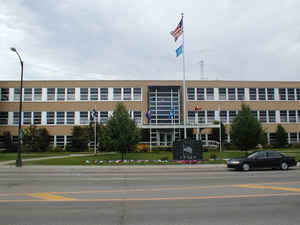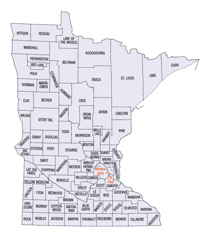Minnesota Counties
There are eighty-seven Counties in Minnesota. On October 27, 1849 nine large Minnesota Counties were created. Among them were Benton, Dahkotah, Itasca, Ramsey, Mahkahta, Pembina, Wabashaw, Washington, and Wahnata. Of those Benton, Dakota, Itasca, Ramsey, Wabasha, and Washington still exist as their original name. With the creation of Kittson County on March 9, 1878, Pembina County no longer existed. When Minnesota was organized as a state, 57 of the present 87 Counties were established. The last county to be created was Lake of the Woods County in 1923Itasca County, Minnesota
Itasca County Education, Geography, and History
Itasca County is a county located in the State of Minnesota. Based on the 2010 census, the population was 45,058. Its county seat is Grand Rapids. The county is named after Lake Itasca, which is in turn a shortened version the Latin words veritas caput, meaning 'truth' and 'head', a reference to the source of the Mississippi River. Portions of the Bois Forte and Leech Lake Indian reservations are in the county.
Etymology - Origin of Itasca County Name
Named after Lake Itasca. Lake Itasca was named by the explorer Henry R. Schoolcraft in 1832. He made up the name by combining the Latin words veritas and caput, which mean "truth" and "head", respectively. Schoolcraft discovered the source of the Mississippi river at the lake.
Demographics:
County QuickFacts: CensusBureau Quick Facts
Itasca County History
Itasca County was first formed in 1849, upon the creation of the Minnesota Territory. It was originally a much larger
county, which covered many of today's northeastern Minnesota counties. The original Itasca County stretched over Cook, Lake, Saint Louis,
Koochiching, eastern Lake of the Woods, eastern Beltrami, Itasca, northern Aitkin, and northern Carlton counties, today in Minnesota.
Itasca County was originally named for Lake Itasca. It was found to be the true source of the Mississippi River. After many disputes over
finding the source of the Mississippi River, Henry Roe Schoolcraft set out to find its true source in 1832. Once he came upon its true source,
he decided to name this 'Lake Itasca.' The Mississippi River flows from its small beginnings at Lake Itasca past Bemidji and other cities all
the way down to the Gulf of Mexico.
Broken down, Itasca makes reference to the Latin saying 'Veritas Caput' which has a definition of 'true head.'
It was thought to name Itasca County after Lake Itasca because of the importance of finding the true source of the Mississippi River. With the
Mississippi River being one of our great waterways of the nation, the name being chosen for this county was only appropriate to be after the
Mississippi River's true source: Lake Itasca.
Geography: Land and Water
As reported by the Census Bureau, the county has a total area of 2,928 square miles (7,580 km2), of which 2,668 square miles (6,910 km2)
is land and 260 square miles (670 km2) (8.9%) is water. It is the third-largest county in Minnesota by land area.
The landscape in Itasca County varies greatly. The low plains, rolling hills, and wetlands occur where there was glacial activity in the past.
This area is known greatly for being forested, and has been for centuries. The different forests are made up of trees such as pines, spruces,
hardwoods, cedar, and tamarack. The many large forests in the area make forestry and logging major sectors in the economy.
Major forests in the county include the Chippewa National Forest, the Big Fork State Forest, George Washington State Forest, Golden
Anniversary State Forest, and the Marcell Experimental Forest.
In Itasca County there are many different bodies of water from big lakes, to small creeks, to major rivers. Over 1400 lakes are located within
the county. These bodies of water help support many different wildlife species such as different birds and small mammals. Major bodies of
water in the county include Lake Winnibigoshish, Pokegama Lake, Deer Lake, the Mississippi River, Bowstring Lake, and the Blandin Paper Mill
Reservoir.
Neighboring Counties
Bordering counties are as follows:
- Koochiching County (north)
- Saint Louis County (east)
- Aitkin County (south)
- Cass County (southwest)
- Beltrami County (west)
Education







